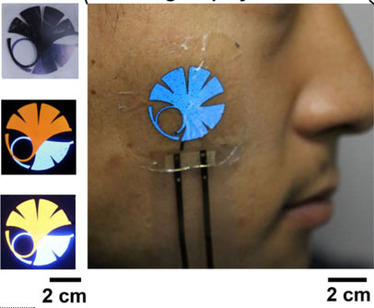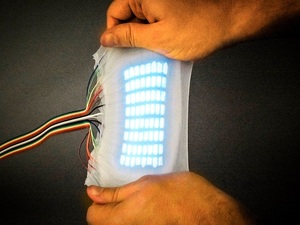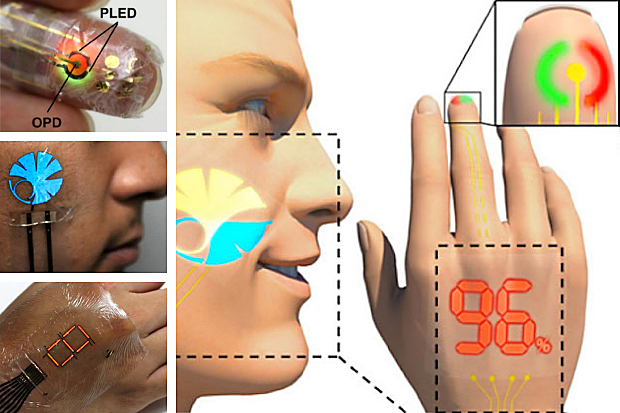Japanese researchers have developed a thin-film electronic display that is a magnitude of order thinner than the human epidermis, allowing it to be laminated on to a person's skin without the wearer knowing it's there.
The University of Tokyo's Graduate School of Engineering developed a mechanical flexibile and stretchable "e-skin" film through the use of an organic light-emitting diode display.
The new e-skin can be fitted with electronic components for health-monitoring and information technologies that alleviate stress and discomfort associated with more traditional health monitors.
"On-skin seven-segment digital displays and color indicators can visualize data directly on the body," the researchers wrote in a paper published in the peer-reviewed journal Science Advances.
The e-skin could also find a market for industrial applications, where it's important to fabricate devices "using processing methods that maximize throughput and minimize cost."
 Creative Commons Lic.
Creative Commons Lic. A finger with the ultraflexible organic optical sensor attached.
The e-skin display contains polymer light-emitting diodes (PLEDs) that display three colors (red, green and blue) and organic photo detectors (OPDs) or optoelectronic sensors that measure light and provide multiple electronic functions, such as monitoring blood oxygen levels and display them on the surface of human skin. The total thickness of the devices, including the substrate and encapsulation layer, is 3 microns, or three thousandths of a millimeter.
 Creative Commons Lic.
Creative Commons Lic. A human face with a blue, two-color logo of the University of Tokyo. The brightness can be changed by the operation voltage.
"The combination of different types of organic devices on an ultrathin film is crucial to realizing multiple electronic functions on the surface of the skin using organic ultrathin-film devices for smart wearable and medical systems," the researchers wrote.
The researchers were able to wire the e-skin display using transparent indium tin oxide electrodes to an ultrathin substrate without damaging it, making the 'e-skin' display possible.
"By integrating green and red PLEDs with OPDs, we fabricate an ultraflexible reflective pulse oximeter," the researchers stated. "The device unobtrusively measures the oxygen concentration of blood when laminated on a finger."
This story, "New electronic display is 10 times thinner than human skin" was originally published by Computerworld.

















